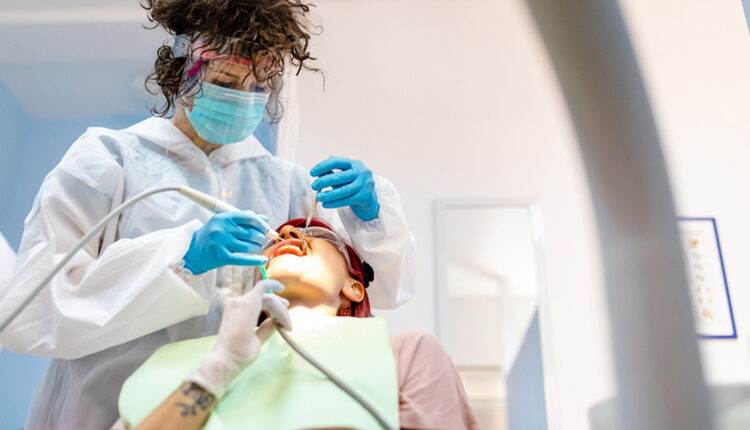 Kosamtu / E+
Kosamtu / E+
Ultrasonic Instrumentation Is Key to Successful Perio Maintenance
Successful periodontal maintenance (PM) depends on removing biofilm and calculus, as well as root planing and implant debridement.1 Ultrasonic instrumentation is often indicated to improve the efficiency and efficacy of PM appointments. Performing a comprehensive periodontal evaluation will help clinicians in making the most appropriate choices when it comes to choosing the best instrument for the task at hand.
The lack of bleeding on probing is positive in assessing health.1–3 If bleeding on probing is identified, inflammation is present; therefore, it is wise to instrument these areas with extra diligence.4 A careful examination of the bleeding on probing site(s) is indicated to determine if residual calculus or newly formed deposits are present. For either type, a site-specific UIT is needed. For example, bleeding in a deep and narrow 7 mm pocket signals that a very long UIT is indicated to reach the base of the pocket and its corresponding walls. If the calculus is burnished or residual, a wider diameter and long UIT is needed (Figure 1). A “top down” approach with a higher power setting is indicated due to the tenacious and larger deposit (Figure 2), followed by a thinner UIT. However, if light deposit is detected, a very thin diameter and long UIT suffices with the technique described above (Figure 2).

A deep PPD is defined as 5 mm or greater and warrants special attention. Deep pockets should be debrided with long, thin UITs to reach the epithelial attachment and adjacent topography. Depending on the surface of the deep pocket and its shape, either a long and thin curved or straight UIT will be indicated. Bathtub-shaped or curved and wide pockets are treated with a curved UIT to match the topography (Figure 3). A long and very narrow pocket will be best cared for with a straight design (Figure 4).

The clinical attachment level (CAL) is critical to visualize during PM. Its path across the dentition relates to the type and shape of the pockets defined by the periodontal probing. The location of the CAL itself does not indicate a certain ultrasonic insert/tip (UIT); however, it does correlate to the UIT and technique needed for sites with PPD, furcation involvement, and mobility.

The greater the number and complexity of periodontal conditions, the more time and skill needed for PM. Identifying the periodontal conditions and local, oral risk factors allows for site-specific instrumentation.

References
- Chapple ILC, Mealey BL, Van Dyke TF, et al. Periodontal health and gingival diseases and conditions on an intact and a reduced periodontium: Consensus report of workgroup 1 of the 2017 World Workshop on the Classification of Periodontal and Peri‐Implant Diseases and Conditions. J Periodontol. 2018;89:S74–S84.
- Lang N, Adler R, Andreas, Joss Nyman S. Absence of bleeding on probing: An indicator of periodontal stability. J Clin Periodontol. 1990;17: 714–721.
- Lang NP, Joss A, Tonetti M. Monitoring disease during supportive periodontal treatment by bleeding on probing. Periodontol 2000. 1996;12:44–48.
- Checchi L, Montevecchi M, Checchi V, Zappulla F. The relationship between bleeding on probing and subgingival deposits. An endoscopical evaluation. Open Dent J. 2009;28:154–60.
This information originally appeared in Hodges KO. The intersection of periodontal maintenance and ultrasonic instrumentation. Dimensions of Dental Hygiene. 2019;17(4):14,16.

